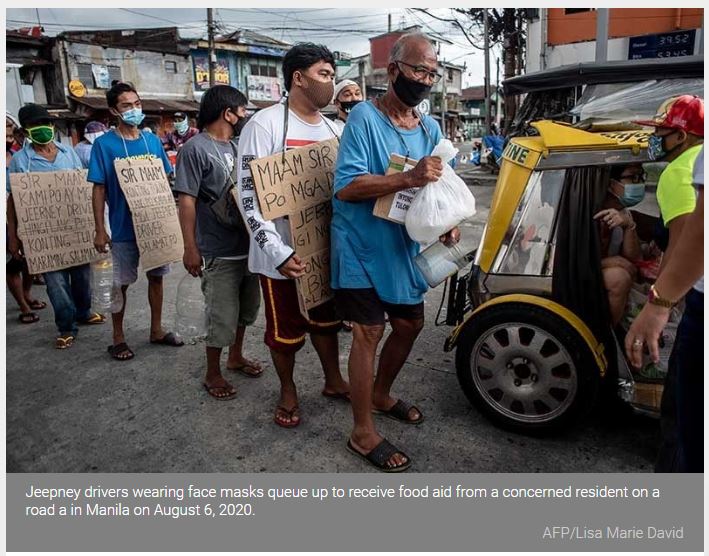Pandemic damage seen worse in Philippines than most peers
MANILA, Philippines — The Philippines suffered the largest downward revision in outlook this year from the Asian Development Bank (ADB), which now see the economy plunging to a deeper contraction than most of its Southeast Asian peers due to the pandemic.
The Manila-based lender now see the local economy shrinking 7.3% year-on-year in 2020, worse than June’s projected 3.8% contraction and April’s optimistic forecast of 2% growth, according to the flagship Asian Development Outlook report released Tuesday. The figure was also more pessimistic than the government’s assumption of a 5.5% contraction in 2020.
A bounce-back to 6.5% expansion was retained for 2021 “assuming that the virus is contained, fiscal support bolsters economic activity and the global economy recovers in parallel.”
“The growth projection for 2020 is downgraded after steep contraction in private consumption and investment drove a sharp recession in the first half of 2020,” ADB said in its report.
“The forecast for slow recovery in the second half of 2020 and stronger growth in 2021 is subject to downside risks. Recurring or worsening COVID-19 outbreaks pose the risk of containment becoming longer and more stringent, which would again impede economic activity,” it explained.
Across Southeast Asia, Thailand is the only country which is poised to contract deeper than the Philippines at 8% this year. Only three countries— Vietnam, Myanmar and Brunei Darussalam— were seen growing this year, led by the former two at 1.8% year-on-year.
On average, the Philippines is expected to perform worse than the region this year, which is forecast to contract 3.8%, worse than June’s 2.7%. The broader developing Asia is also now seen shrinking slightly by 0.7% in 2020, with China now on growth path to 1.8% expansion.
Tepid consumption
At home, ADB said that while quarantine restrictions had been eased, the public’s hesitancy to venture outside their homes poses risks of a longer deterioration in household consumption, which drives 70% of the economy. Companies, meanwhile, would likely hold back from investing this year.
Weaker consumption will prevail as the jobs picture is forecast to remain bleak. While the jobless rate is seen “gradually” falling from 10% last July, this would likely be a result of more people venturing to informal work to get by the hard times, “reflecting lower quality jobs.”
Remittances from migrant workers, a key driver of consumption, would also remain “weak,” ADB said, although a latest report from the central bank released also Tuesday showed cash remittances peaked to $2.78 billion in July this year, suggesting a more solid rebound looms.
However, the flip side of weaker demand would be prices remaining stable in the near-term. Inflation is forecast to hit 2.4% this year before accelerating to 2.6% in 2021, slightly faster than June level due to higher oil prices, albeit still within the low-end of the central bank’s 2-4% target.
With prices less of a problem this year, ADB said the Bangko Sentral ng Pilipinas would “likely free up more funds for banks to lend” by cutting mandated reserves anew after a 200-basis-point reduction last March.
Overall, “monetary policy is expected to remain expansionary,” the lender said, suggesting that record-low interest rates that followed a cut of 175 bps this year would remain intact.
“We expect the recovery to be slow and fragile for the rest of this year, and growth to accelerate in 2021 on the back of additional fiscal support and an accommodative monetary policy stance,” Kelly Bird, ADB country manager, said in an online briefing.
Source: https://www.philstar.com/business/2020/09/15/2042597/pandemic-damage-seen-worse-philippines-most-peers


 Thailand
Thailand




